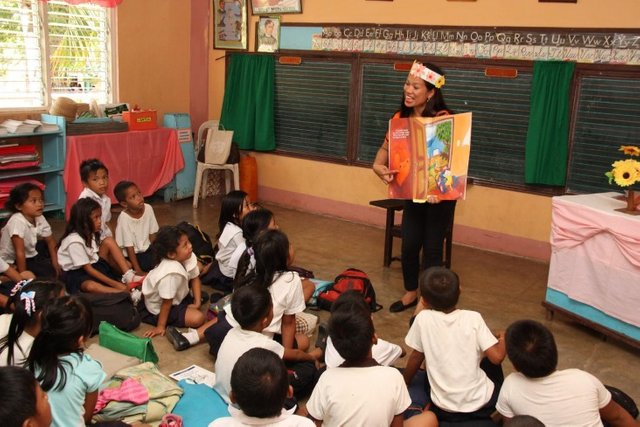School Fees Go Free in the Philippines
School Fees Go Free in the Philippines

Image Source
The granting of the free tuition fees in State Universities and Colleges (SUCS) started rolling out throughout the Philippines in 2017. However, it was not immediately realized due to some reasons mainly economic in the first place. Nonetheless, for the students coming from poor families, it was the most substantial information they have received ever in their lives as students.
In 2017, the government approved the law mandating all the public universities and colleges in the country to provide free accommodation to their students in terms of assessment fees during enrollment. The early implementation was only limited to tuition fees. Book and miscellaneous fees were still not part of the program. Also, it was only set to selected universities nationwide. 114 universities were granted to provide free education among 607 State-funded universities and colleges all over the Philippines. It is expected to penetrate to more schools in the future.
However, the free tuition privilege was still not entirely put into the ground until 2018. Some of the included schools for the free tuition privilege were caught collecting tuition fees. They insisted that they needed those money for their own development projects and budget allocation for their faculty and staffs. It was also due to the unfinished process of the implementation of the law in the Congress back then as the government was early in giving list of the schools included in the program. It has just been recently reported that the free tuition of the SUCs listed became officially implemented with corresponding punishment against those schools who would not follow it.
This program has become a big impact on the lives of the students especially the poor ones because before such implementation, most SUCs collect expensive fees from the students. Alongside the tuition fees were the extravagant miscellaneous fees such as dental fee, insurance fee, athletic fee, computer fee, internet fee, library fee, publication fee, Intramural fee, medical fee, student ID fee, and those hidden fees not even stated properly by the school. There were also compulsory expensive fieldtrips and other extra-curricular activities. Take note that these are just the experiences of the students in State schools. The worst case happened to private schools. But today, as the free tuition has just been implemented, students from private schools can just transfer to privileged public schools nearby.

Image Source
To assume the greatest lump of school training, cost belongs to boarding houses and dormitories, transportation, and other out-of-take understudy use which small poor agriculturists, fishermen, sidewalk vendors, jeepney drivers, taxi drivers, underpaid laborers, and even general population workers of government and private foundations would still be able to cope up with accommodating their children to schools. Initially, who might truly profit by the free educational cost give of the legislature? Clearly, not the poor students of the toiling parents but rather those in the middle class, if not the lower ones. The extremely poor students would be sidelined by the well meaningful yet less-thoroughly considered enactment.
Then again, the considerable issue in Philippine education is not so much about how moderate or how accessible it is, but, yet, quality and the privilege and fitting correspondence between the supply like earning and aptitude gave by the instructive framework and what is fundamentally required by the economy. As it may be, the supply is in abundance yet is horribly improper to different industry needs.
This ought to be what the academic organizers have investigated. The K-12 program, which was started before this program, did not fail to basically add rungs to the instructive step. Its guide, shape set up the premium and slant of the students versus the requirements of the economy. In numerous nations in Europe, for example in Switzerland and Norway, degree programs are discretionary for understudies to seek after, that is, following nine years of basic tutoring and resulting apprenticeship which sets them up for employments or future occupations of their advantage and decision.
The instructive plan merits attempting in legitimizing training in the nation. The apprenticeship program is something the Department of Education (DepEd) and the Technical Education and Skill Development Authority (TESDA) may together analyze to realign and coordinate their projects.

Image Source
With respect to tertiary training, the Commission on Higher Education (CHED) should fix the screw on superfluous course offerings. Admission to degree projects ought to be entirely controlled. For the reason, the CHED may hold national confirmation examination for degree programs. It might likewise direct focused grant examination for passage to state colleges and universities, particularly for degrees in the sciences and building. Fruitful examinees ought to get government bolster for school expenses and living stipends. In such manner, the focused grants allow offered each year by the Mindanao State University in the 60s and mid 70s to the upper 5 percent of the graduating classes in Mindanao, Sulu and Palawan is a decent model on free training to poor yet meriting understudies.
Based on the exploitation suffered by the poor students, this program has been the greatest step of the Department of Education towards helping students attain their dreams. It has realized the benefit the country can get with this program. These students will soon pay the country back with services and patriotism. While jobs overseas always attract Filipino job seekers, at least, they could see their conscience of serving the country instead.
This can also the greatest solution for poverty in the Philippines. Illiteracy and ignorance have always led to crimes and other legal offenses harming citizens, and police officers cannot solve it just by picking them up to bars. Why greatest solution? Because majority of the Filipino criminals are uneducated, and poverty has always been the reason for committing crimes.
The Philippine Congress will be allocating 40 billion pesos to be used to cover up the expenses of the students studying in the SUCs included on the list of beneficiaries. 16.8 billion of it will be used in the 1st phase of the program while 3 to 4 billion pesos will be allocated to vocational programs like courses only requiring at most 2 years of education.

Image Source
To listen to the audio version of this article click on the play image.

Brought to you by @tts. If you find it useful please consider upvote this reply.
There are rules, laws, and regulations in the Philippines, but now one here is upholding them. The ones that the people elected have done nothing but stuff their own pockets with the tax money collected to fund these projects and laws.
It's a shame how the government and it's elected officials prefer to fill their pockets and not carry the people to a higher standard. If these school fees are being paid by the state, why is the schools still apply fees?
It's a constant scam in disguise.
Cannot agree more with "Illiteracy and ignorance have always led to crimes..." Literacy is very important for the growth of the community. Thank you for sharing.
This is a great help to my good students in a public high school when state universities are tuition-free with the law.
Access to education for all! This is commendable.
Doing this way could not only but the poor families to take their children to school but also as a nation on getting improvement for education.